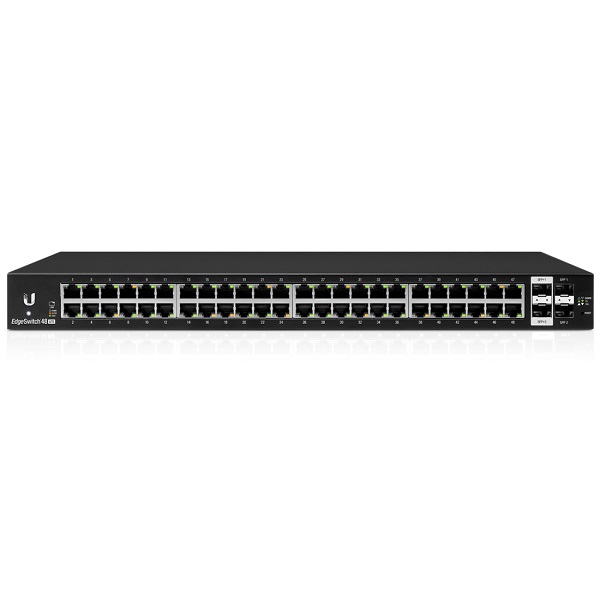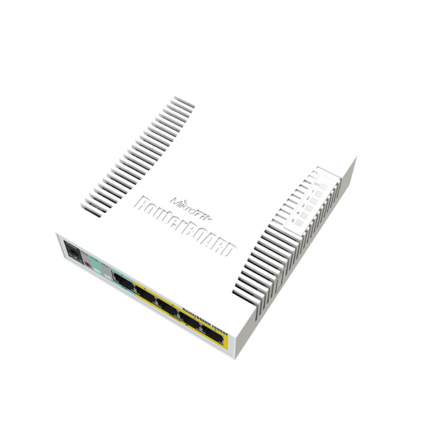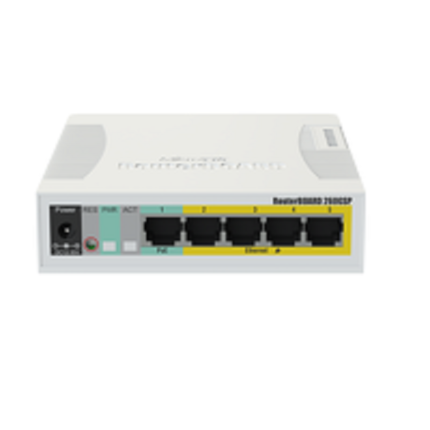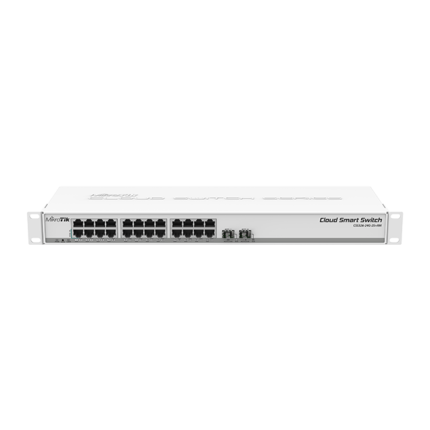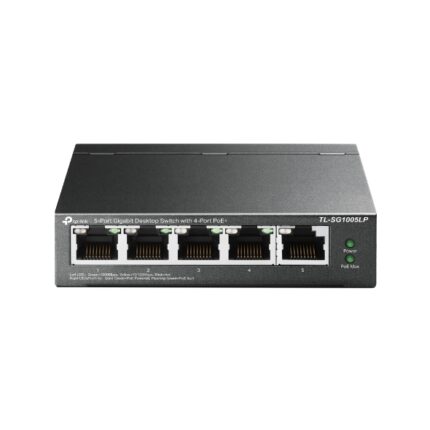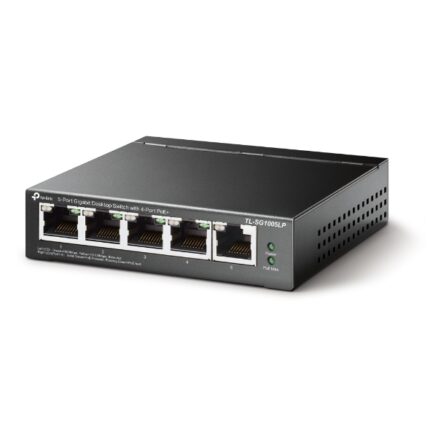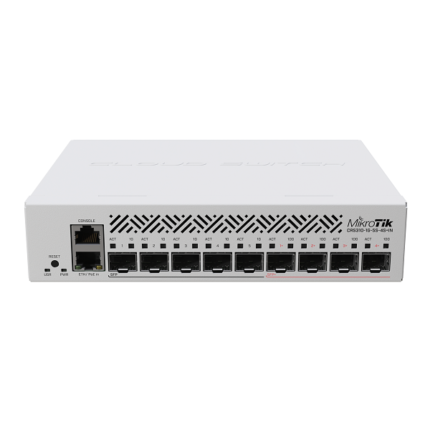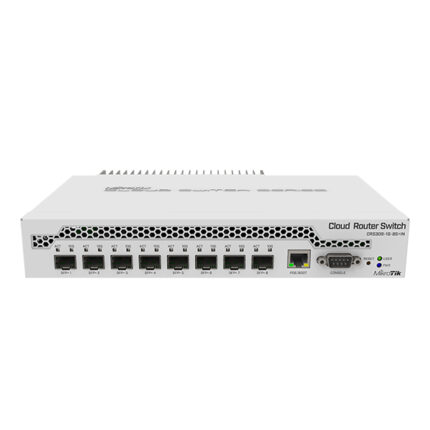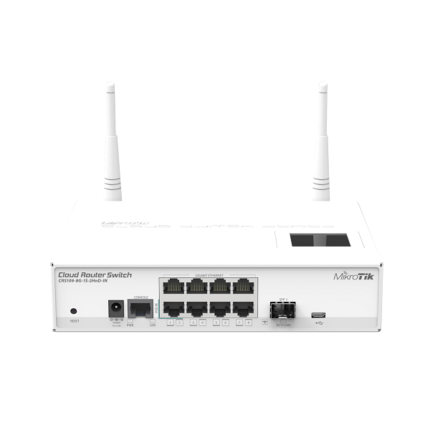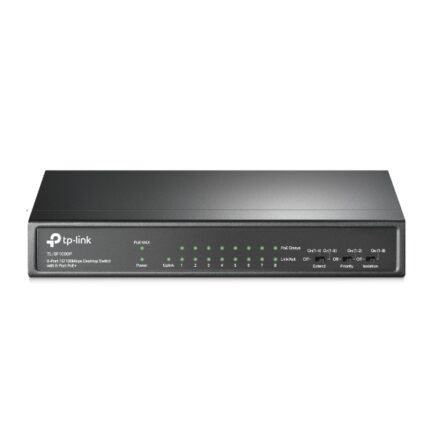Ubiquiti EdgeSwitch Lite 48 – Technical Specifications
General
- Dimensions: 443 x 43 x 286 mm (17.44 x 1.69 x 11.26″)
- Weight:
– Rack-Mount Brackets Included – 3.65 kg (8.05 lb)
– Rack-Mount Brackets Excluded – 3.56 kg (7.85 lb) - Total Non-Blocking Throughput: 70 Gbps
- Switching Capacity: 140 Gbps
- Forwarding Rate: 104.16 Mpps
- Max. AC Power Consumption: 56W
- Power Method:
– AC: 100-240VAC/50-60 Hz, Universal Input
– DC: DC 56W, 25 to 16V, with 2.5 mm DC Power Inline Connector - Power Supply: AC/DC, Internal, 56W DC
- LEDs Per Port:
– Serial Console Port: N/A
– RJ45 Data Ports: Speed/Link/Activity
– SFP+/SFP Data Ports: Speed/Link/Activity - Networking Interfaces:
– (48) 10/100/1000 Mbps RJ45 Ethernet Ports
– (2) 1/10 Gbps SFP+ Ethernet Ports
– (2) 1 Gbps SFP Ethernet Ports - Management Interface: (1) RJ45 Serial Port, Ethernet In/Out Band
- Certifications:
– CE
– FCC
– IC - Rackmount: Yes, 1U High
- ESD/EMP Protection: Air: ±24 kV, Contact: ±24 kV
- Operating Temperature: -5 to 40° C (23 to 104° F)
- Operating Humidity: 5 to 95% Noncondensing
- Shock and Vibration: ETSI300-019-1.4 Standard
Core Switching Features
- ANSI/TIA-1057: LLDP-Media Endpoint Discovery (MED)
- IEEE 802.1AB: Link Layer Discovery Protocol (LLDP)
- IEEE 802.1D: Spanning Tree Compatibility
- IEEE 802.1S: Multiple Spanning Tree Compatibility
- IEEE 802.1W: Rapid Spanning Tree Compatibility
- IEEE 802.1Q: Virtual LANs with Port-Based VLANs
- IEEE 802.1p: Ethernet Priority with User Provisioning and Mapping
- IEEE 802.1X: Port-Based Authentication with Guest VLAN Support
- IEEE 802.3: 10BASE-T
- IEEE 802.3u: 100BASE-T
- IEEE 802.3ab: 1000BASE-T
- IEEE 802.1ak: Virtual Bridged Local Area Networks – Amendment 07: Multiple Registration Protocol
- IEEE 802.3ac: VLAN Tagging
- IEEE 802.3ad: Link Aggregation
- IEEE 802.3x: Flow Control
- IEEE 802.1D-2004: Generic Attribute Registration Protocol: Clause 12 (GARP)
- IEEE 802.1D-2004: Dynamic L2 multicast registration: Clause 10 (GMRP)
- IEEE 802.1Q-2003: Dynamic VLAN registration: Clause 11.2 (GVRP)
- RFC 4541: Considerations for Internet Group Management Protocol (IGMP) Snooping Switches
- RFC 5171: Unidirectional Link Detection (UDLD) Protocol
Advanced Layer 2 Features
- Broadcast Storm Recovery
- Broadcast/Multicast/Unknown Unicast Storm Recovery
- DHCP Snooping
- IGMP Snooping Querier
- Independent VLAN Learning (IVL) Support
- Jumbo Ethernet Frame Support
- Port MAC Locking
- Port Mirroring
- Protected Ports
- Static MAC Filtering
- TACACS+
- Voice VLANs
- Unauthenticated VLAN
- Internal 802.1X Authentication Server
Platform Specifications
- DHCP Server – Maximum Number of Pools: 128 – Maximum Number of Leases (Total): 2048
- Routing – Number of Routes: 16 – Number of Routing Interfaces: 15
- VLANs: 4093
- MAC Addresses: 16,384
- MSTP Instances: 4
- LAGs: 6
- ACLs: 100 with 10 Rules per Port
- Traffic Classes (Queues): 8
System Facilities
- Event and Error Logging Facility
- Run-Time and Configuration Download Capability
- PING Utility
- FTP/TFTP Transfers via IPv4/IPv6
- Malicious Code Detection
- BootP and DHCP
- RFC 2021: Remote Network Monitoring Management Information Base Version 2
- RFC 2030: Simple Network Time Protocol (SNTP)
- RFC 2819: Remote Network Monitoring Management Information Base
- RFC 2865: RADIUS Client
- RFC 2866: RADIUS Accounting
- RFC 2868: RADIUS Attributes for Tunnel Protocol Support
- RFC 2869: RADIUS Extensions
- RFC 3579: RADIUS Support for EAP
- RFC 3580: IEEE 802.1X RADIUS Usage Guidelines
- RFC 3164: BSD Syslog Protocol
Management
- Web UI
- Industry-Standard CLI
- IPv6 Management
- Password Management
- Autoinstall Support for Firmware Images and Configuration Files
- SNMP v1, v2, and v3
- SSH 1.5 and 2.0
- SSL 3.0 and TLS 1.0
- Secure Copy (SCP)
- Telnet (Multi-Session Support)
Layer 3
- Static Routing
QoS
- Access Control Lists (ACLs), Permit/Deny Actions for Inbound IP and Layer 2 Traffic Classification Based on:
– Time-Based ACL
– Source/Destination IP Address
– TCP/UDP Source/Destination Port
– IP Protocol Type
– Type of Service (ToS) or Differentiated Services (DSCP) Field
– Source/Destination MAC Address
– EtherType
– IEEE 802.1p User Priority
– VLAN ID
– RFC 1858: Security Considerations for IP Fragment Filtering - Optional ACL Rule Attributes:
– Assign Flow to a Specific Class of Service (CoS) Queue
– Redirect Matching Traffic Flows - Differentiated Services (DiffServ):
– Classify Traffic Based on Same Criteria as ACLs
– Mark the IP DSCP or Precedence Header Fields, Optional
– Police the Flow to a Specific Rate with Two-Colour Aware Support
– RFC 2474: Definition of the Differentiated Services Field (DS field) in the IPv4 and IPv6 Headers
– RFC 2475: An Architecture for Differentiated Services
– RFC 2597: Assured Forwarding Per-Hop Behavior (PHB) Group
– RFC 3246: An Expedited Forwarding PHB
– RFC 3260: New Terminology and Clarifications for DiffServ - Class of Service (CoS) Queue Mapping Configuration:
– AutoVoIP: Automatic CoS Settings for VoIP
– IP DSCP-to-Queue Mapping
– Configurable Interface Trust Mode (IEEE 802.1p, DSCP, or Untrusted)
– Interface Egress Shaping Rate
– Strict Priority versus Weighted Scheduling per Queue


